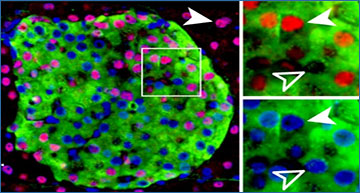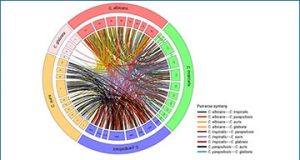Long non-coding RNAs (LncRNAs) have been recently found to be pervasively transcribed in the genome and critical regulators of the epigenome. HOTAIR, as a well-known LncRNA, has been found to play important roles in several tumors. Herein, the clinical application value and biological functions of HOTAIR were focused and explored in esophageal squamous cell carcinoma (ESCC).
 Researchers at the Sun Yat-Sen University Cancer Center, China found that there was a great up-regulation of HOTAIR in ESCC compared to their adjacent normal esophageal tissues. Meanwhile, patients with high HOTAIR expression have a significantly poorer prognosis than those with low expression. Moreover, HOTAIR was further validated to promote migration and invasion of ESCC cells in vitro. Then some specific molecules with great significance were investigated after HOTAIR overexpression using microarray and quantitative real time-PCR (qPCR). WIF-1 playing an important role in Wnt/β-catenin signaling pathway was selected and further tested by immunehistochemistry. Generally, inverse correlation between HOTAIR and WIF-1 expression was demonstrated both in ESCC cells and tissues. Mechanistically, HOTAIR directly decreased WIF-1 expression by promoting its histone H3K27 methylation in promoter region and then activated the Wnt/β-catenin signaling pathway. This newly identified HOTAIR/WIF-1 axis clarified the molecular mechanism of ESCC cell metastasis and represented a novel therapeutic target in patients with ESCC.
Researchers at the Sun Yat-Sen University Cancer Center, China found that there was a great up-regulation of HOTAIR in ESCC compared to their adjacent normal esophageal tissues. Meanwhile, patients with high HOTAIR expression have a significantly poorer prognosis than those with low expression. Moreover, HOTAIR was further validated to promote migration and invasion of ESCC cells in vitro. Then some specific molecules with great significance were investigated after HOTAIR overexpression using microarray and quantitative real time-PCR (qPCR). WIF-1 playing an important role in Wnt/β-catenin signaling pathway was selected and further tested by immunehistochemistry. Generally, inverse correlation between HOTAIR and WIF-1 expression was demonstrated both in ESCC cells and tissues. Mechanistically, HOTAIR directly decreased WIF-1 expression by promoting its histone H3K27 methylation in promoter region and then activated the Wnt/β-catenin signaling pathway. This newly identified HOTAIR/WIF-1 axis clarified the molecular mechanism of ESCC cell metastasis and represented a novel therapeutic target in patients with ESCC.
- Ge XS, Ma HJ, Zheng XH, Ruan HL, Liao XY, Xue WQ, Chen YB, Zhang Y, Jia WH. (2013) HOTAIR, a prognostic factor in esophageal squamous cell carcinoma, inhibits WIF-1 expression and activates Wnt pathway. Cancer Sci [Epub ahead of print]. [abstract]
 lncRNA Blog lncRNA Research and Industry News
lncRNA Blog lncRNA Research and Industry News







